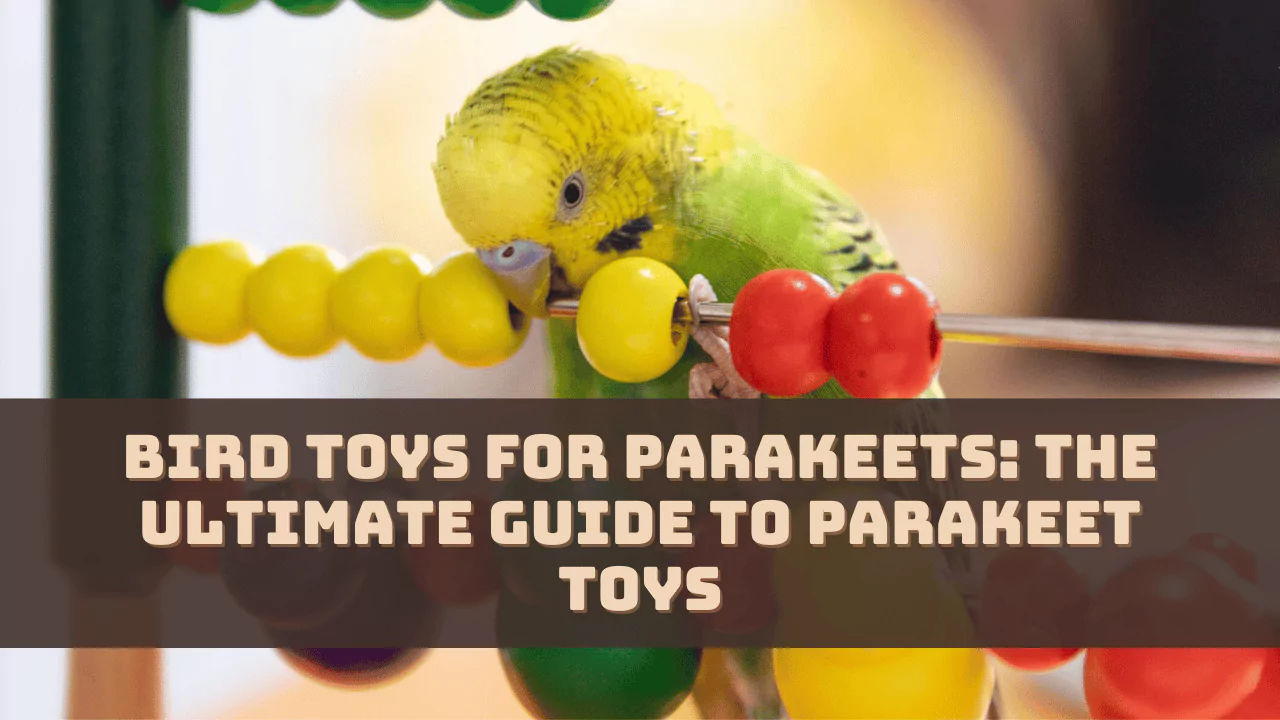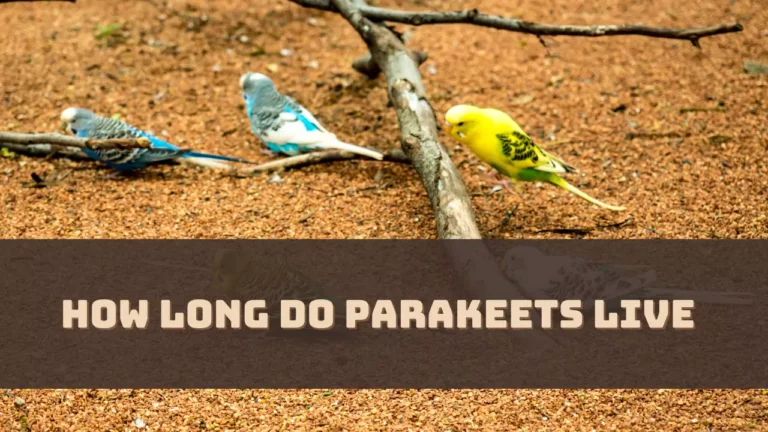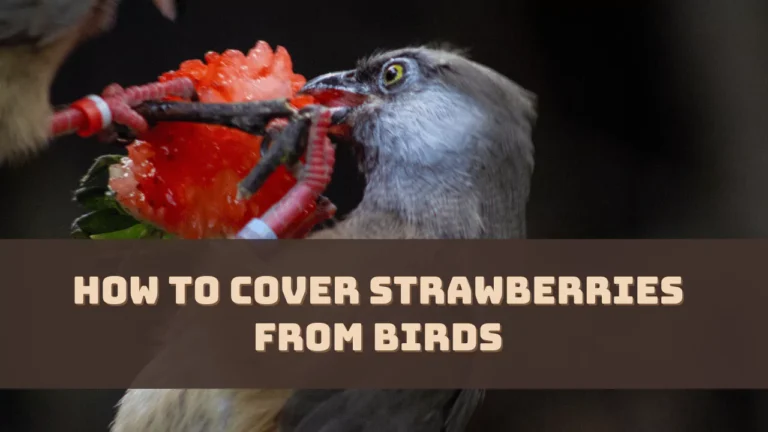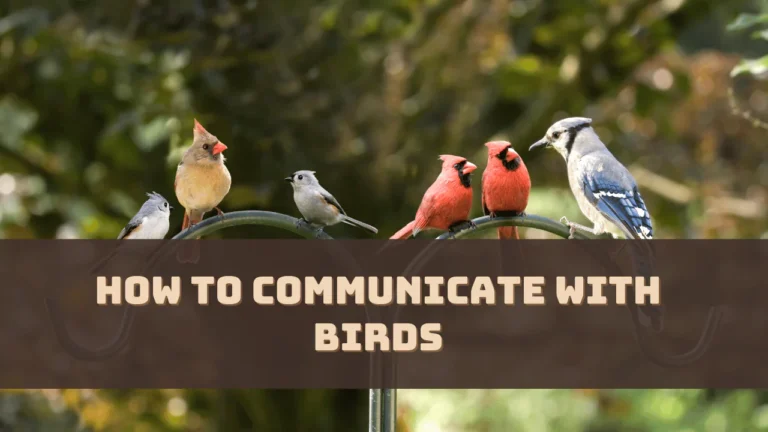Parakeets love spending time with toys when introduced in their cage. It is their way of interacting and mitigating their boredom. But, are toys safe for parakeets?
Yes, toys are safe for parakeets but you need to choose the ones that do not have sharp edges or objects with loose threads. Also, avoid toys that have gaps, otherwise accidentally the birds’ heads can get stuck, leading to a feeling of being trapped, generating panic and stress, and eventually the bird might die due to a broken neck.
Let’s dig deep to understand the toys that would be the perfect interacting item for the parakeet.
Are Toys Beneficial for the Parakeet?
The bird gets easily bored when kept in captivity and the only time they can spend is playing with toys which help to release the built-up energy. Toys help the birds to release boredom and avoid the risk of developing behavioral problems.
Toys play a huge role in the daily activity of the birds, it keeps them mentally and physically agile and also encourages them to get enough exercise. They also get to explore new strategies of holding, exploring, chewing, or even hanging items. Toys are meant to keep the parakeet occupied and entertained for hours.
What are the Types of Toys Meant for Parakeet?
If you think that the same toy that you bought for the parrot would be suitable for the parakeet, then you are wrong. The toy should be bird-specific and you must also inquire whether the toy is too big or too sharp or has a presence of any toxic element. You have to choose a non-dyed, non-colored, and non-varnished toy. The toy must not react with environmental chemicals or be sensitive to environmental changes.
The 4 categories of toys that you can find for parakeets are:
Swinging
Parakeets are known to be natural swingers, so the first toy you can introduce to them is any item suspended from the roof of the cage, be it a hanging rope or a suspended bell. You can also get the classic parakeet swing and attach a bell and hoop to add more fun.
Climbing
Parakeets also enjoy climbing ropes, so you can fit ropes vertically or horizontally based on your preference. You need to fit the ropes tightly and there should not be any loose ends or loose threads as their toenails and beaks might get stuck in them.
Chewing
Parakeets like to nibble and chew stuff they find inside the cage, so you can provide them with cuttlefish bone or balsa wood. The chewing tendency of these birds grows during the breeding season, so you can provide chewable toys that would keep them busy. It would also ensure that the bird doesn’t chew other valuable items when brought outside the cage.
Exploring
If you want the bird to develop their multi-sensory, then try to provide them with toys that have different textures and attachments such as perch, bells, and ladders. You can also choose complex toys, such as small balls, skittles, and mirrors. These toys keep them occupied through their versatile features that include noise, movement, and texture.
What are All-Purpose Toys for Birds?
All-purpose toys never go out of season, where the parakeet can climb on and swing. They can also hit them and nibble on the bells. These toys can also become a part of another toy, such as a swing or a hanging toy. When choosing the parakeet bells, it must have an open bottom and partially slit meant for the toe and beak.
How to Make the Cage Interesting?
Other than providing the parakeet with entertaining toys, you can also make the cage interesting by providing them with food. Choose fresh fruits, vegetables, and seeds and rotate them to keep the bird excited about getting new types of food every day. The dispenser should have enough fresh and clean water and there should not be any bacteria build up. You can also add cuttlebone, which is a good source of calcium. Along with this, you can also add mineral blocks. Do not feed the bird watery food items, avocados, chocolates, or caffeinated food.
Alternative Entertaining Ways for Parakeets
- Talk to the birds often, tell them stories every day, and this would keep them busy and engaged and also build a strong bond.
- Try out different games with them, such as peek-a-boo, or teach them to climb on your finger.
- Allow the bird to roam freely in the room so that they can enjoy their flight, however, keep all the windows and doors shut and ensure there are no hazardous objects lying around.
- Introduce the parakeet to new areas of the house which would be a stimulating experience for the bird.
- You can also introduce a new parakeet as they would definitely love a new company.
- Place the cage near the window and allow the bird to watch all the events going around but avoid direct sunlight and also check the window for cold drafts.
- Never keep the bird near an open window, allow the parakeet to see through the glasses.
Do and Don’t while Adding a Perch
If you are adding a perch inside the case to keep the bird busy and active, then here are certain aspects you must consider:
- Install perches of varying types, sizes, shapes, thicknesses, and shapes, which makes the cage look different.
- Try to rotate the perches or rearrange them every week and also clean the rods during the process.
- Check whether the perch is stable to avoid any kind of injury.
- Choose perches made of eucalyptus, which would be safe for the birds.
- Always go for natural woods, so that the bird’s feet can stay strong and healthy due to the irregular shape.
- Never go for wood made of prunus or oak trees as these contain certain toxic elements that might be harmful to the birds.
- Always avoid concrete perches as these might hurt the bird’s feet.
- Never crowd the cage with too many toys or perches, as the birds won’t get enough space to spread their wings and move around.
- You can add a mirror housed inside a plastic case to the cage, but it should be fixed, without any sharp ends.
- Try to avoid circular cages as these do not provide them enough room to fly.
What are the Ideal Toys for Birds?
Toys that are stainless, natural, non-toxic, made of wood, rope, and acrylic material, or ones that are indestructible, are considered ideal for the birds. The chewable toy list includes branches, pinecones, natural fiber rope, cloth, soft pine, rawhide, and more.
Which Toys Are Not Ideal for the Bird?
Toys that have big spaces where the bird’s head can get caught or too small spaces where the beak or toe can get caught are not desirable as toys meant for parakeets. If there are shreds of rope on the toy or perches have begun to unravel, then these can entangle around the toe, neck, or leg of the bird making them unsafe for use. Also, toys with soldered and galvanized metals such as connectors, hooks, and chains are toxic to birds. Moreover, toys that are easily dismantled such as small link chains or balsa wood, metal clips, bell clappers, etc., are not appropriate for Parakeets.




